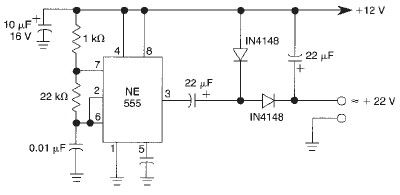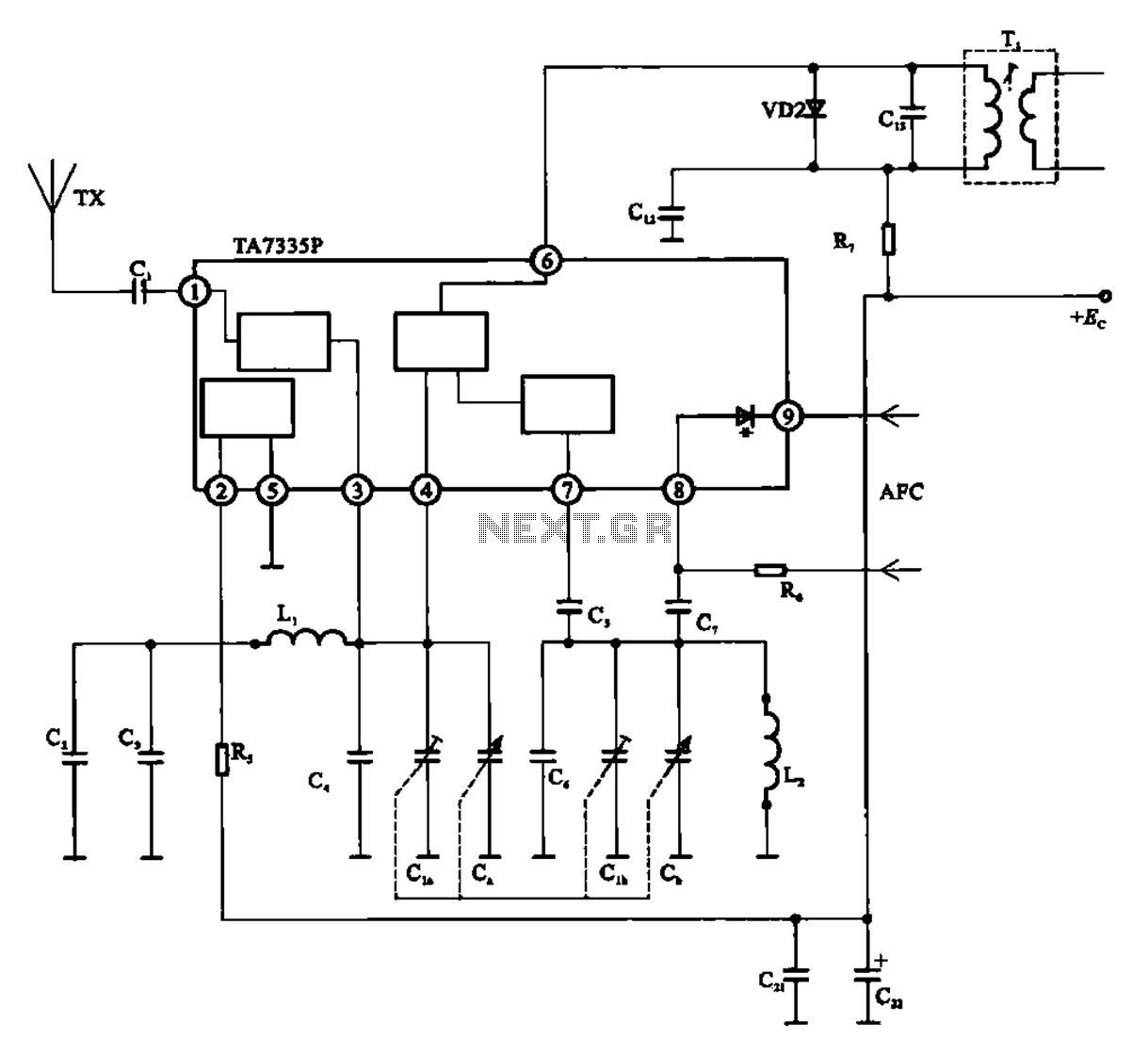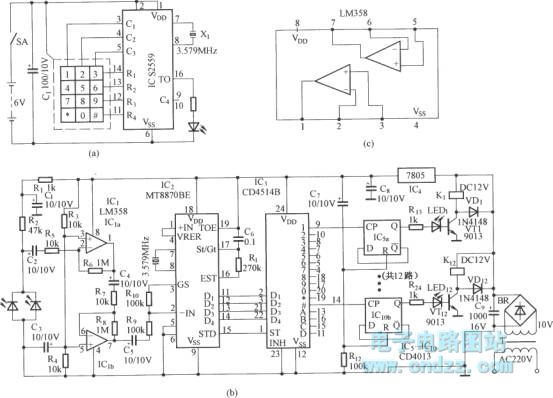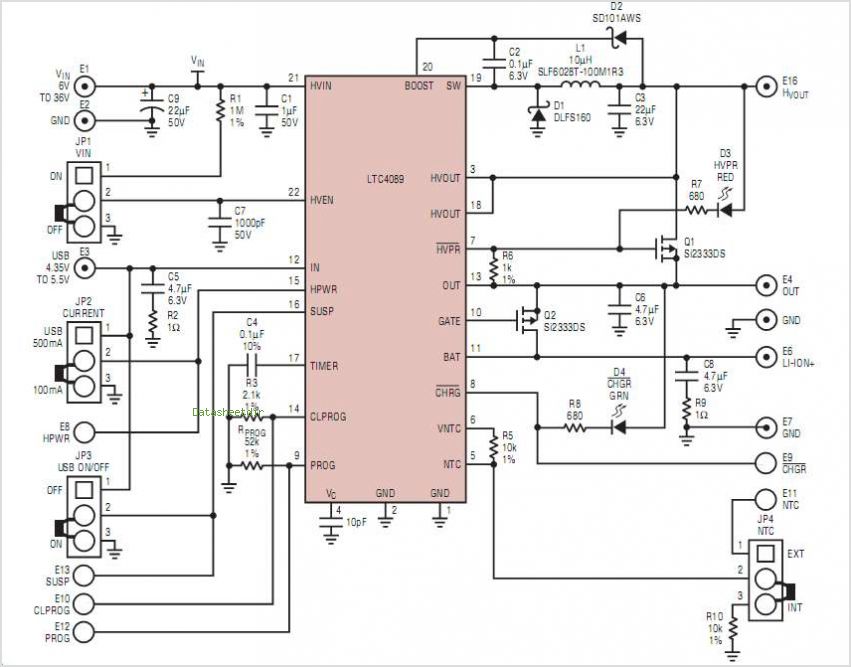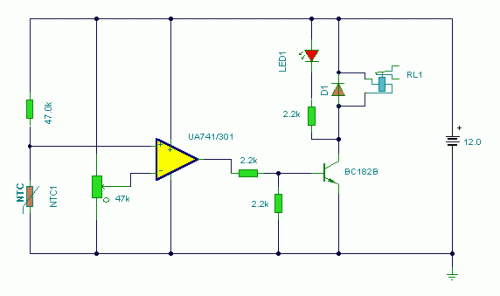
500 w Light modulation circuit diagram
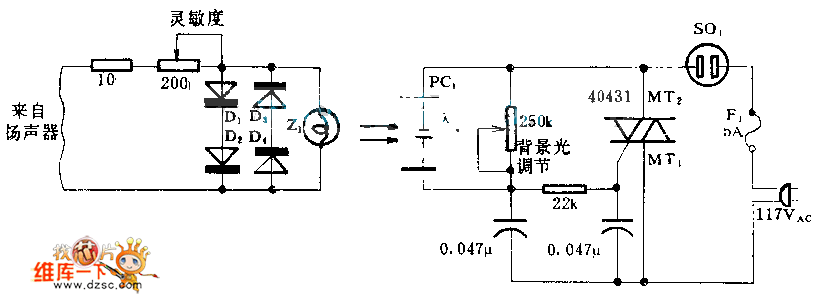
When the circuit is connected to hi-fi equipment or at both ends of the electronic instrument's speaker, the audio level can be modulated to a 500W lamp proportionally. This is achieved using three appropriate sets of audio filters and three different color light unions to access color music stage lighting effects.
The described circuit serves to create an audiovisual experience by integrating audio modulation with lighting control. It employs a modular approach, utilizing three distinct audio filters to process incoming audio signals from hi-fi equipment or speakers. These filters can be configured to target specific frequency ranges, allowing for tailored audio responses that correspond to the dynamics of the sound being played.
The output of the audio filters is then used to modulate the intensity of a 500W lamp. This modulation is proportional to the audio level, meaning that as the audio signal varies in amplitude, the brightness of the lamp will change accordingly. This feature allows for a direct visual representation of the audio content, enhancing the overall experience during performances or presentations.
In addition to the audio filtering and lamp modulation, the circuit incorporates three different color light unions. These unions are likely designed to produce various colors of light that can be synchronized with the audio output. By utilizing color mixing techniques and possibly RGB LED technology, the circuit can create dynamic lighting effects that correspond to the music's rhythm and intensity.
The combination of these elements results in an engaging color music stage lighting effect, where the interplay of sound and light creates an immersive environment. The design of the circuit should include considerations for power management, heat dissipation, and signal integrity to ensure reliable operation during extended use. Proper shielding and grounding techniques may also be necessary to minimize interference and enhance performance.When the circuit is connected to the hi-fi equipment or at both ends of the electronic instruments speaker, the audio level can be modulated to 500W lamp by proportion. Using 3 appropriate sets of audio filters and 3 different color light Union microscopy to access to color music stage lighting effects..
🔗 External reference
The described circuit serves to create an audiovisual experience by integrating audio modulation with lighting control. It employs a modular approach, utilizing three distinct audio filters to process incoming audio signals from hi-fi equipment or speakers. These filters can be configured to target specific frequency ranges, allowing for tailored audio responses that correspond to the dynamics of the sound being played.
The output of the audio filters is then used to modulate the intensity of a 500W lamp. This modulation is proportional to the audio level, meaning that as the audio signal varies in amplitude, the brightness of the lamp will change accordingly. This feature allows for a direct visual representation of the audio content, enhancing the overall experience during performances or presentations.
In addition to the audio filtering and lamp modulation, the circuit incorporates three different color light unions. These unions are likely designed to produce various colors of light that can be synchronized with the audio output. By utilizing color mixing techniques and possibly RGB LED technology, the circuit can create dynamic lighting effects that correspond to the music's rhythm and intensity.
The combination of these elements results in an engaging color music stage lighting effect, where the interplay of sound and light creates an immersive environment. The design of the circuit should include considerations for power management, heat dissipation, and signal integrity to ensure reliable operation during extended use. Proper shielding and grounding techniques may also be necessary to minimize interference and enhance performance.When the circuit is connected to the hi-fi equipment or at both ends of the electronic instruments speaker, the audio level can be modulated to 500W lamp by proportion. Using 3 appropriate sets of audio filters and 3 different color light Union microscopy to access to color music stage lighting effects..
🔗 External reference
